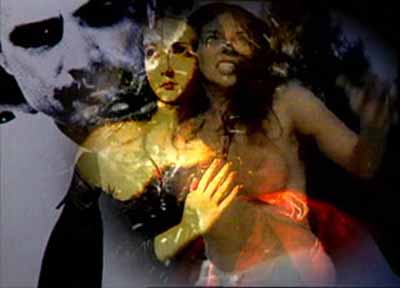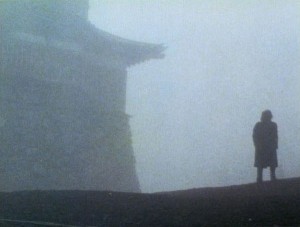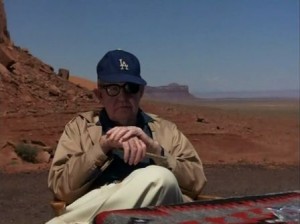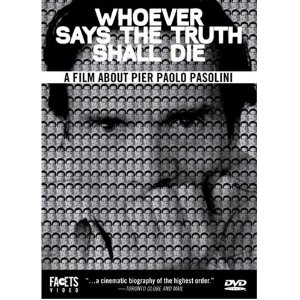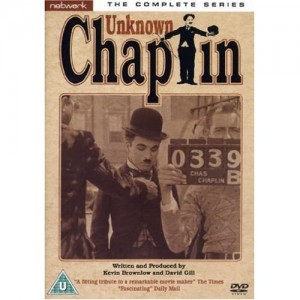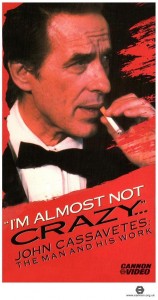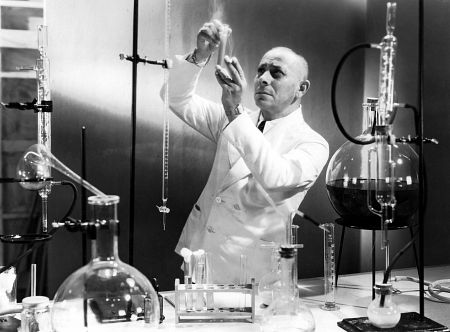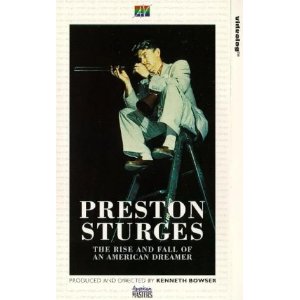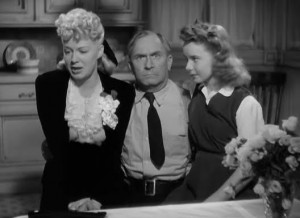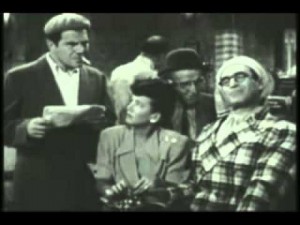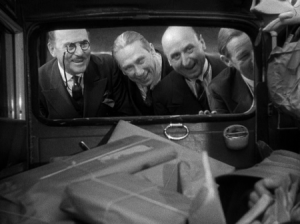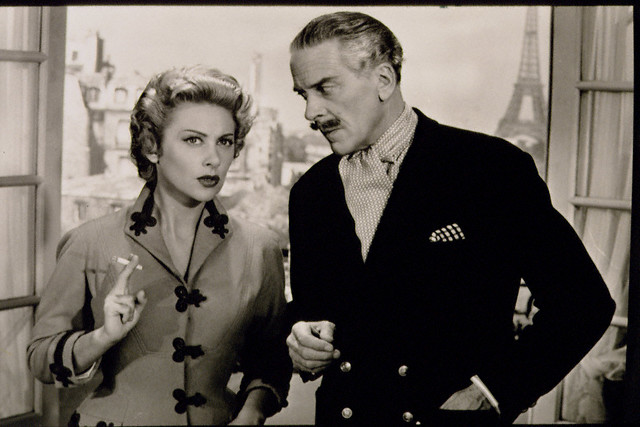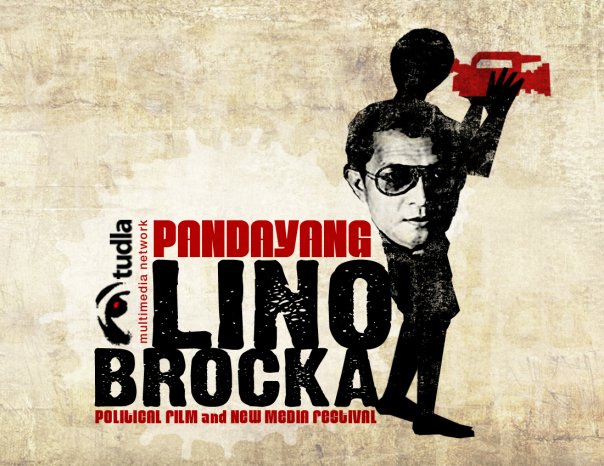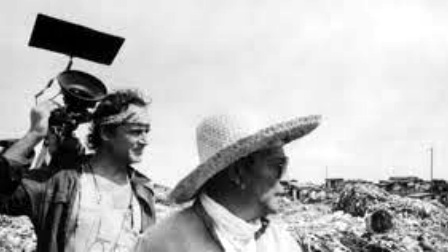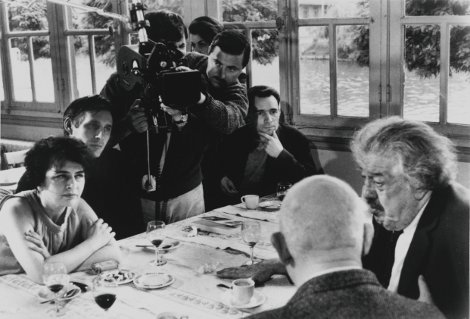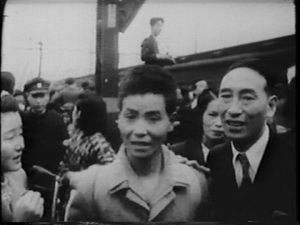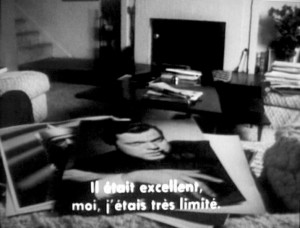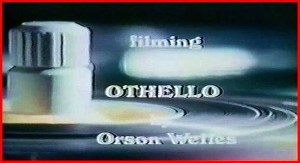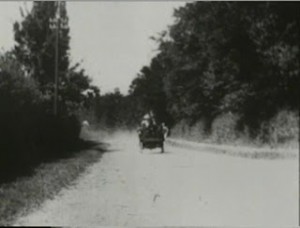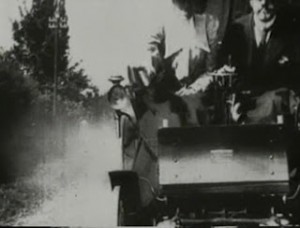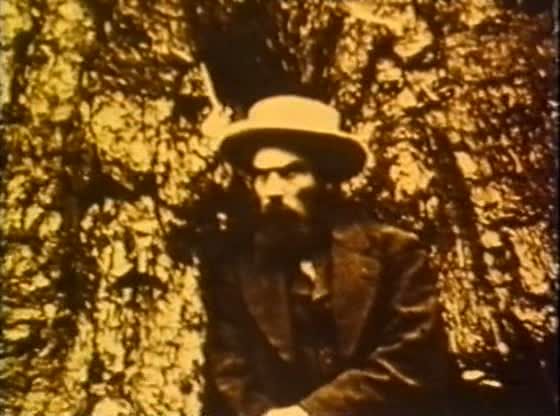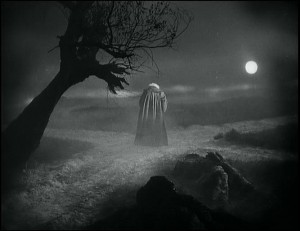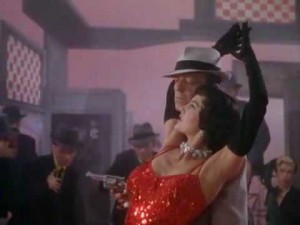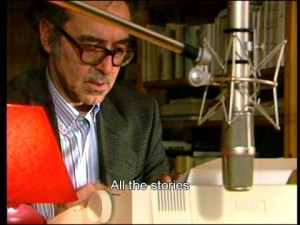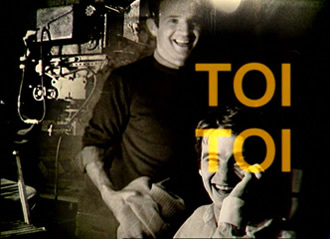From Sight and Sound (Winter 1990/91). -– J.R.
It’s no secret that serious film criticism in print has become an increasingly scarce commodity, while ‘entertainment news’, bite-size reviewing and other forms of promotion in the media have been steadily expanding. (I’m not including academic film criticism, a burgeoning if relatively sealed-off field which has developed a rhetoric and tradition of its own-the principal focus of David Bordwell’s fascinating recent book, Making Meaning) But the existence of serious film commentary on film, while seldom discussed as an autonomous entity, has been steadily growing, and in some cases supplanting the sort of work which used to appear only in print.
I am not thinking of the countless talking-head ‘documentaries’ about current features — actually extended promos financed by the studios or production companies — which include even such a relatively distinguished example as Chris Marker’s AK (1985), about the making of Kurosawa’s Ran. The problem with these efforts is that they further blur the distinction between advertising and criticism, and thus make it even harder for ordinary viewers to determine whether they are being informed about something or simply being sold a bill of goods. What I have in mind are films about films and film-makers which seriously analyse or document their subjects. Many of these films surface at festivals, turn up on TV, and are used in academic courses, but very few ever wind up in commercial theatres, and so are rarely reviewed outside the trade journals. I can’t claim to be comprehensive in this survey, so what follows is merely meant to be suggestive, and mainly weighted towards what I’ve seen recently.
A few words about the conventions of this sub-genre. Most films about the work of a film-maker have a standard itinerary: a show-and-tell format, consisting of interviews (with the film-maker and friends, associates, biographers, critics), clips, and, if’ the subject is still alive, footage documenting work on a recent feature. The best examples from the past include Peter Bogdanovich’s Directed by John Ford (1971), Philo Bregstein’s Whoever Tells the Truth Shall Die (on Pasolini, 1980), Kevin Brownlow and David Gill’s Unknown Chaplin (1983) and Michael Ventura’s ‘I’m Almost Not Crazy’: John Cassavetes, The Man and His Work (1984), Patrick Montgomery’s The Man You Loved to Hate (1979), scripted by Richard Koszarski and intended as a companion to his Stroheim biography, illustrates the advantages and drawbacks of this approach. Clips from a good many rare films in which Stroheim acted are invaluable, and interviews with many people who knew Stroheim well give us a vivid sense of his personality; but the amount of concrete information imparted is minuscule compared with Koszarski’s book. Production histories of each film whiz by so rapidly that we are ultimately left with much more about Stroheim’s public profile than his directorial style. The commentary is certainly enlightened, but if we want any sense of how Stroheim’s style evolved, we have to look elsewhere.
Much the same can be said of Preston Sturges: The Rise and Fall of an American Dreamer (1990), with the difference that here there is no satisfactory biography to fall back on — unless one counts the recently published Preston Sturges, skilfully edited and adapted by Sandy Sturges from her husband’s unfinished autobiography, letters and diaries. We do, however, have Manny Farber and W. S. Poster’s essay ‘Preston Sturges: Success in the Movies’ and Penelope Houston’s Sturges entry in Richard Roud’s Cinema: A Critical Dictionary, both of which contain critical insights which the film makes no attempt to approximate. Directed by Kenneth Bowser and written by the former Variety critic and reporter Todd McCarthy, the documentary competently lays out the basic facts and contradictions of Sturges’ life and meteoric career; and it’s notable for the variety of archive material it draws or, from radio interviews, through Sturges’ cameo appearance in Star Spangled Rhythm (1942), to photographs and verbal accounts of the gabmaster at work.
Two facets of Sturges’ career are, however, regrettably glossed over: his extraordinary stock company of character actors and his last film. Andrew Sarris perceptively describes how these actors function in a typical Sturges scene, and the narration goes on to cite half-a-dozen names while subliminally quick close-ups from a group photograph flash by: William Demarest, Jimmy Conlin, Robert Warwick, Jack Norton, Robert Greig, Frank Moran. But given the Bruegelian richness of this aspect of Sturges’ art, the list should have been much longer — at least a dozen major names are omitted, from Edgar Kennedy and Raymond Walburn to Lionel Stander and Akim Tamiroff — and a clip illustrating the choral function of these characters would not have been amiss.
Made in France in 1956 in separate French and English versions, Les Carnets du Major Thompson and The French They Are a Funny Race/The Diary of Major Thompson — Sturges’ rare swan song is the only film he directed not to be accorded a clip. Apart from Pauline Kael’s judicious short notice in 5001 Nights at the Movies, almost every critical reference to the film in print writes it off as dreadful, and this documentary clearly concurs by so hastily gliding past it. Having seen the English version, however, I beg to differ. While it is far from a masterpiece, the film has sweetness, gallantry, wit and an uncharacteristic leisurely pace that is elegiac rather than inert. (If there is a dreadful film in the Sturges canon — and I am afraid there is — it’s The Beautiful Blonde from Bashful Bend.)
These cavils aside, the picture is a good example of what the conventional show -and-tell format can accomplish. The same is true of Paul Joyce’s Motion and Emotion: The Films of Wim Wenders (1989), though here the film’s principal value is as a work of criticism. This is a rare virtue in American show-and- tell documentaries, which usually try to hide their critical biases — as the Sturges documentary does with its disdain for the director’s last film. Motion and Emotion, on the other hand, conveys a sense of what is both questionable and praiseworthy about Wenders’ work. Without being malicious or polemical, it also offers the best ideological critique of Wenders I have encountered: much of this comes from the critic Kraft Wetzel who remarks, during a fascinating discussion touching on the director’s use of women and children, that Wenders will be remembered as the Christian Democrat of the New German Cinema. As a detailed investigation of a major contemporary film-maker, this documentary strikes me as a more valuable overall appraisal than any book or article I have read on the director, even providing the basis for a critique-in-advance, as it were, of Wenders’ Notebook on Cities and Clothes.
Christian Blackwood’s Signed: Lino Brocka focuses more on its subject’s life than on hismfilms; considering Brocka’s career, however, this approach seems sensible. (It worked less well when applied to Raul Ruiz in Jill Evans’ Exiles series on Channel 4; there the emphasis on how nice a fellow Ruiz was didn’t leave much space for dealing with the more subversive aspects of his work.) The film opens with shots of Manila, while we hear Brocka speaking on the phone in English to someone in France. He tells Blackwood he is responding to a French survey about why he makes films; then he reads his reply, a lengthy statement which concludes, ‘Film for me recaptures the spontaneous, pure, no-nonsensical relationship I had with the world as a child. This is why later, when I learned what was happening to my countrymen, I decided I also wanted to be part of those who tell the truth — I wanted to cry and I wanted to disturb. . .signed, Lino Brocka.’
Cut to a shot of Brocka directing. The movie-in-progress, we learn, is being made as a favour to a producer who paid Brocka’s bail bond when he was arrested for acting as a negotiator in a 1985 jitney transit strike. Brocka goes on to describe his difficult childhood, his varied background (including work as a monk in a Hawaiian leper colony), his developing relationship to his homosexuality, the local film industry, his hatred for Ferdinand and Imelda Marcos, and his growing activism. What impresses one most through this extended illustrated conversation with Blackwood is the courage and intelligence of Brocka’s candour.
When clips from his films are shown — shot directly from a screen or movieola — Brocka translates the dialogue, explains the plots and offers some self-critical asides to Blackwood. The documentary assumes, as well as demonstrates, a continuity between Brocka’s passion as a director and his passion as a human being, and while Brocka speaking cannot wholly take the place of seeing a Brocka film, it provides an absorbing introduction.
The French emphasis on style and form has on occasion breathed new life into the standard show-and-tell format, notably in André Labarthe and Janine Bazin’s TV series Cinéastes de notre temps, which has been appearing since the 60s and which often imitates the shooting and editing styles of the directors interviewed. Thus, Josef von Sternberg was accorded Sternbergian lighting while he spoke about The Saga of Anatahan; Samuel Fuller’s anecdotes and two-fisted aphorisms were punctuated with staccato editing; and Cassavetes was filmed around the time of Faces (by Labarthe and Hubert Knapp) with a hand-held camera in his own home and environs. One sometimes regrets the absence of any impulse to contextualise the directors’ remarks in a more critical light. Like most of Sternberg’s critics, Labarthe seems to accept at face value the director’s insistence that apart from the sea everything in Anatahan is artificial and created for the camera. But what of the key archive sequence of Japanese soldiers returning after the war? Without the dialectical power of this documentary intrusion — particularly in relation to the abstract homecoming sequence — the greatness of Anatahan would be substantially diminished.
More recently, in Cinéma de notre temps, a successor to Cinéastes…, David Lynch is filmed by Guy Girard at his home, dictating a script to a secretary while the camera drifts dreamily into the next room to pick up a slanted view of Eraserhead on a TV set before gliding back to Lynch again. Thanks partly to the questions offered, this is a sharper portrait of Lynch than the usual promos, but it is still some distance from a genuine critical overview.
Labarthe has recently applied similar tactics to a semi-fictional feature in English
about the last days of Orson Welles — called The Big O in English, and L’Homme
qui a vu I’homme qui a vu I’ours in French — and in several ways this uneven
work summarises the achievements and pitfalls in the sort of mimetic journalism
which has engaged Labarthe over several decades. Described as a ‘fictional essay,’
The Big O resurrects the fictional Laszlo Kovacs — an alias of Michel Poiccard
(Jean-Paul Belmondo) in Breathless, reprised by Belmondo in modified form
in Chabrol’s A Double Tour — played here by New Wave bit actor (and post –
New Wave director) Laszlo Szabo, serving as Labarthe’s virtual stand-in.
Trying to launch a feature of his own in Los Angeles, Kovacs becomes
obsessed with investigating what Welles was up to before he died. With the
aid of friends,he improbably arranges a series of interviews with former
associates and acquaintances of Welles, most of them conducted in Szabo’s
heavily accented English (although John Houseman, filmed shortly before
his own death, speaks in French). Eventually, Kovacs moves to New York and
Paris for further revelations and metaphysical speculations.
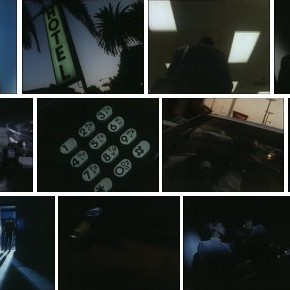
Although the film improves as it proceeds, it is limited by a perverse capriciousness in terms of style and scholarship: a plethora of tilted angles, dominating the first half, conveys only a superficial notion of Welles’ mutable style (although later the film becomes more subtle when it imitates the lighting scheme of the Orly sequence of F for Fake); and the treatment of Welles as a mythic father figure, the subject of an Oedipal search, oscillates uneasily between genuine investigation and a refusal to sort out truth and legend. Houseman’s frequent claim that Welles never wrote a word of Citizen Kane has been definitively disproved, but you would never guess it here, where Houseman’s repetition of this lie — refuted even in his own correspondence with Welles while Kane was in production — is permitted to go unchallenged.
By contrast, Henry Jaglom’s assertion that he openly taped many of his conversations with Welles at the latter’s own request is refuted in detail by Welles’ long-time associate Alessandro Tasca di Cuto, reportedly the last person to have seen Welles alive, who states that the taping, belatedly discovered by Welles, was done without his prior knowledge or consent. Labarthe is somewhat cavalier about distinguishing between authorities and braggarts; many of the participants, moreover, were interviewed without knowing that they were appearing in a semi-fictional work, so levels of deception come into play on both sides. What this adds up to may not be entirely satisfactory as either research or criticism, although as a tortured reflection on the lures and snares of French cinephilia, it is often a pungent document.
Some of the most interesting documentaries adopt some or all of the show-and-tell format only to subvert it, and in ways that are more fruitful than Labarthe’s. Orson Welles’ Filming Othello (1978), a prime instance of thisskullduggery, features clips from Welles’ 1952 Othello, yet all but the first of these are substantially re-edited by Welles and shown silent while he offers commentary over them. While Welles never alludes to this procedure — except perhaps in an aside on ‘quoting or misquoting’ critical comments byJack Jorgens and André Bazin — it has the provocative and unsettling effect of continually transforming the supposedly fixed object under examination. We are hearing about a film made in 1952, but what we are seeing is the scrambled shards of a dream of Othello, oddly akin to the dreamlike prologue of Citizen Kane, rather than the film itself.
Three academic studies of early cinema deserve attention. While some of the historical assertions in Noël Burch’s Correction, Please, or How We Got Into Pictures (1979) and What Do Those Old Films Mean? (1985) are open to debate, the use of fiction in the former film to illustrate theories about the evolution of film form between 1900 and 1906 is imaginative and inventive, and both works offer sustained looks at rare archive footage in near optimum conditions.
Thom Andersen’s Eadweard Muybridge, Zoopraxographer (1976), by contrast,
seems unimpeachable both as history and film-making. Beginning with a
quote from Mao and ending with allusions to Zeno and Da Vinci, it is remarkable
for the amount of information it imparts in an hour, and for the economy with
which it suggests the philosophical, sociological, scientific, aesthetic, optical,
technical and theoretical implications of Muybridge’s motion studies without
belabouring any of them. Using split-screen effects to juxtapose simultaneously
two or more angles and/or speeds in these studies, and even simulating one
Muybridge study in colour, the film superimposes its own analytical grids over
Muybridge’s, and thus yields a complex historical meditation.
A more recent theoretical study is Godard’s TV series Histoire(s) de cinéma (1988) — an extremely hermetic (if fascinating) work using dozens of clips, stills, printed titles and fragments of soundtracks, many of them simultaneously or in rapid alternation along with his own fragmented commentary, to tease out various apparent relationships between film and history. Godard concocted this delirious exercise in associative collage at precisely the point where the cinephilia that launched his own generation is nearing extinction, which means that most of his linkages are bound to be semi-comprehensible at best, even to specialists.
The printed title ‘le cinema substitue’ ushers in alternating snatches of Murnau’s
Faust (Faust and Mephistopheles at the crossroads) and Minnelli’s The Band
Wagon (Cyd Charisse and Fred Astaire dancing in a bar), accompanied by a few
lines of dialogue (the narrator seducing the heroine) from Last Year in
Marienbad. That the dance occurs inside a stage musical based on Faust may
be apparent to some spectators, although not many of them are likely to recognise
the Murnau clip or the Marienbad dialogue, much less make the Faustian
connections. Even if they do, what are they (or we) then to make of the apparently
unrelated, subliminal glimpses of films by Renoir and Mizoguchi which follow?
Local clusters are often witty, or at least
until further clusters come along to
interrupt ordissipate them: Howard
Hughes is identified by the title Only
Angels Have Wings, followed by shots
of an airplane, Charles Foster Kane, the RKO logo, and then, through a kind of
delirium of association, the arrival of the aviator in Paris at the beginning of La
Règle du jeu.
The old woman being burned as a witch in Dreyer’s Day of Wrath is accompanied
by Rita Hayworth singing ‘Put the Blame on Mame’ from Gilda. But when the latter
linkage is then followed by old Borgen calling for his son Johannes in Ordet,
thereby establishing a link with Dreyer which seems to cancel out the feminist
wisecrack, one feels cast adrift in a private reverie. ‘Let’s say, for example, that
the history of cinema is the history of all the films that have never been made,’
Godard suggests, and promptly illustrates with evocations of Welles’ Don
Quixote, Othello, Kane, Journey into Fear, It’s All True and F for
Fake — only two of which qualify as unfinished, much less unmade.
Given the perpetual drift in and out of meaning, this on-going series might be
regarded as Godard’s Finnegans Wake. But half a century of scholarship has
decoded or at least illuminated the meaning-clusters of Joyce, while it is difficult,
alas, to foresee comparable efforts being made on behalf of Godard. There’s
something quixotic about this last-ditch effort to process the history of cinema
through his fanciful and cryptic pronouncements — a kind of shorthand synthesis of
(or desperate aide memoire for) what we’ve already forgotten, or at best, like Godard
himself, only half-remembered. In so far as all the films about films discussed here
are efforts to retrieve or resurrect continuities of film history that the marketplace
continues to rend asunder, Godard’s desperate magpie assemblage
— dedicated to Mary Meerson of the Cinémathèque Française — at least has the
virtue of suggesting the range of what is being lost and squandered.

